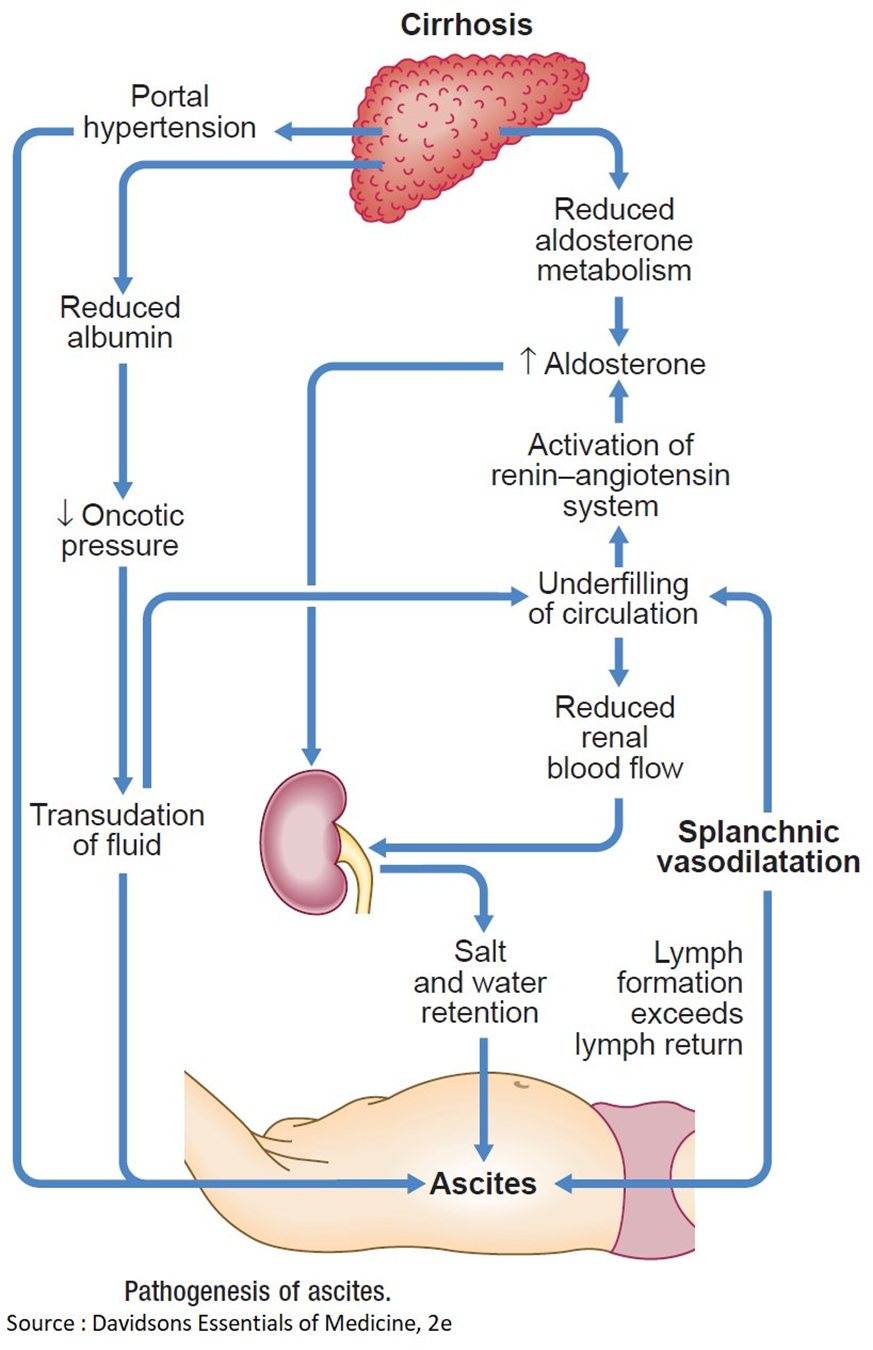The healthcare provider prescribes penicillin 200, 000 units intramuscularly for a client with pneumonia. The available vial is labeled, "Penicillin 500,000 units/mL". How many mL should the nurse administer to this client?
(Enter numerical value only. If rounding is required, round to the nearest tenth.)
The Correct Answer is ["0.4"]
Step 1: Use the Formula
mL = units prescribed ÷ units per mL
Step 2: Plug in the Given Values
mL = 200,000 ÷ 500,000
Step 3: Simplify the Fraction
mL = 2 ÷ 5
Step 4: Convert the Fraction to a Decimal
mL = 0.4 mL
The nurse should administer 0.4 mL of penicillin to this client.
Nursing Test Bank
Naxlex Comprehensive Predictor Exams
Related Questions
Correct Answer is D
Explanation
A. Hyperaldosteronism causing an increased sodium reabsorption in renal tubules.
Hyperaldosteronism is characterized by an excess of aldosterone, a hormone that regulates sodium and water balance. In cirrhosis, however, sodium retention is often related to other mechanisms such as portal hypertension and hypoalbuminemia, rather than hyperaldosteronism.
B. Decreased renin-angiotensin response related to an increase in renal blood flow.
Cirrhosis is more commonly associated with an activated renin-angiotensin-aldosterone system, leading to increased sodium and water retention. The increased renin-angiotensin response is a compensatory mechanism to maintain perfusion in the setting of cirrhosis and does not contribute to decreased renal blood flow.
C. Decreased portacaval pressure with greater collateral circulation.
This statement is not accurate. In cirrhosis, there is typically increased portacaval pressure due to portal hypertension, which can lead to the development of collateral circulation. However, this does not explain the edema and ascites seen in cirrhosis.
D. Hypoalbuminemia that results in a decreased colloidal oncotic pressure.
This is the correct choice. In cirrhosis, liver damage leads to decreased synthesis of albumin. Albumin plays a crucial role in maintaining colloidal oncotic pressure, and when it is decreased (hypoalbuminemia), fluid is more likely to leak out of blood vessels, resulting in edema. The same mechanism contributes to the development of ascites in the abdominal cavity.

Correct Answer is C
Explanation
A. Begin continuous observation for transient episodes of neurologic dysfunction:
While continuous observation is important, the priority is to notify the stroke team for immediate assessment and management.
B. Place an indwelling urinary catheter and measure strict intake and output:
Monitoring intake and output is an important aspect of nursing care, but it is not the immediate priority when the client is presenting with signs and symptoms suggestive of a stroke.
C. Notify the stroke team to assist with acute assessment and management.
The client's symptoms, including an uneven smile with facial droop to the right side, weaker hand grasp strength on the right, and sudden, severe headache, are indicative of potential stroke symptoms. Quick notification of the stroke team is crucial to facilitate a rapid and comprehensive assessment. Time is a critical factor in the management of stroke, and prompt intervention can improve outcomes.
D. Raise the head of the bed to 30 degrees keeping head and neck in neutral alignment:
While positioning is important for maintaining physiological stability, it is not the immediate priority in the context of a potential stroke. Notifying the stroke team for rapid assessment and intervention takes precedence.
Whether you are a student looking to ace your exams or a practicing nurse seeking to enhance your expertise , our nursing education contents will empower you with the confidence and competence to make a difference in the lives of patients and become a respected leader in the healthcare field.
Visit Naxlex, invest in your future and unlock endless possibilities with our unparalleled nursing education contents today
Report Wrong Answer on the Current Question
Do you disagree with the answer? If yes, what is your expected answer? Explain.
Kindly be descriptive with the issue you are facing.
